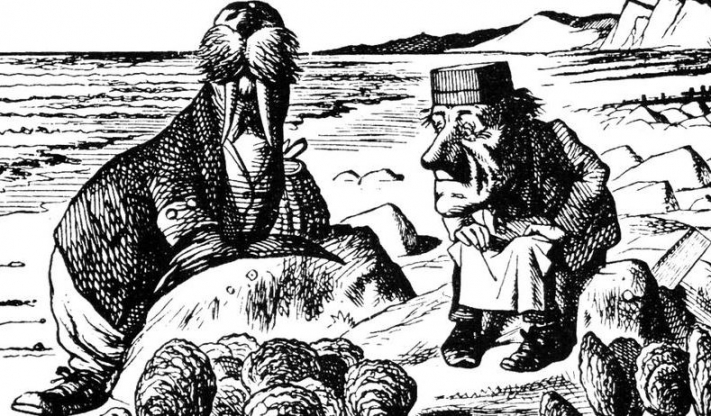Alice in Typhoidland is an audacious new exhibition co-hosted by the Bodleian's Weston Library and the History of Science Museum, exploring the history of typhoid in Oxford and its continued threat elsewhere in the world. A bacterial infection which spreads in contaminated water and food, typhoid was rampant and seemingly incurable for centuries, killing up to 1 in 5 of its victims, until the 1800s when new bacteriological methods ensured that it became preventable disease. Fortunately for most of us, the exhibition explains everything in an accessible, engaging way, so you don't need to be a veteran vaccinologist to pick up some really interesting information.
The title may seem a little incongruous - what has one of Oxford's most beloved literary creations got to do with waterborne disease? Actually, more than you'd think. Alice Liddell, the girl who inspired Carroll's Alice in Wonderland, grew up in an Oxford plagued by typhoid. Set in a low-lying drainage basin and regularly flooded, the city's sewers and cesspools were a nasty conduit for disease. Alice's mother, Lorina, nearly died from typhoid, and her father Henry Liddell, Dean of Christ Church, was a prominent advocate of sanitation reform in Oxford. The team behind the exhibition have created a great animation exploring Alice's Oxford, which you can check out here.
The exhibition itself is divided into two separate sections: Sanitation and Vaccines. The Weston Library's fabulous Blackwell Hall houses the sanitation exhibits: there's pieces of the different types of pipes used in Oxford over the centuries, old maps of the drainage systems and typhoid hotspots and a colourful wall of adverts for cures (not all as genuine as promised). Also dotted around are interactive consoles where you can play Alice in Typhoidland games: interview locals to find the source of a typhoid outbreak, or plumb the city so that the disease doesn't spread. There's plenty here, both for younger visitors and more serious history buffs.
Down in the low-lit basement of the History of Science Museum, where all kinds of bizarre instruments line the walls, is the Vaccines half of the exhibition. Information boards map out the efforts of physicians and professors who sought to analyse and prevent typhoid, accompanied by a variety of artifacts such as some rather nasty-looking surgical probes. There's also more detail on the work of Oxford's sanitary reformers, who improved access to clean water and revamped sewerage systems to miraculously reduce typhoid deaths in the city to virtually zero by the early 1900s. Typhoid was still prevalent elsewhere however, and there is a fascinating cabinet featuring individual soldiers' accounts of being inoculated during the First World War (most fairly unpleasant, if they agreed to be vaccinated at all) as well as some compelling video footage of the process.
Alice in Typhoidland was designed to be multi-faceted, exploring the history of typhoid in Oxford, but also informing visitors about a disease that, while unknown to many in the UK, is still widespread in other parts of the world: every year 11,000,000 people are still infected with typhoid, and 100,000 of those perish from the disease. Particularly concerning is the rise of typhoid strains that are resistant to antibiotics: a current outbreak in Pakistan is resistant to all but one of the affordable antibiotics used to treat the disease. The exhibition's last two cabinets are dedicated to ongoing research and vaccination development programmes. A new one-shot vaccine, TCV, was tested in Oxford in 2017 and has now been rolled out overseas, radically changing the way typhoid is managed and prevented.
The exhibition is largely successful in generating interest in a topic that many will know little about, tackling a unique aspect of Oxford's history. Likewise, the link to Alice in Wonderland is a brilliant device to make the subject more engaging, even if the family-friendly elements of the exhibition don't go much further than the interactive games and animations. That said, a full schedule of events has been planned around the exhibition, featuring craft days and talks, and lots of imaginative content can be found on the dedicated website. There is indeed much to see in Typhoidland - Oxford's underside has never seemed so murky.




